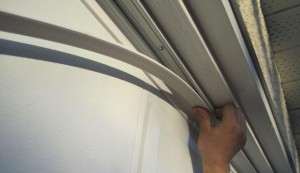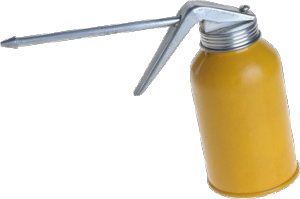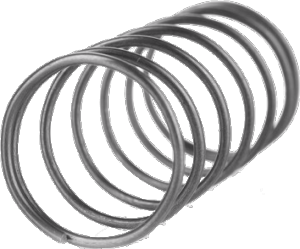 How to Winterize Your Garage Door
How to Winterize Your Garage Door
To prepare your garage door for winter, you’ll need to freshen up your moving parts. It’s also helpful to check your weather-proofing materials for structural integrity.
Take a close look at your:What should I do to prepare my garage door?
Double check your weather stripping
Your weather stripping is a rubber, PVC, or polyurethane seal that closes gaps and shuts exposed areas off from the elements. Garage doors use weather stripping to protect your car and stored items from constant exposure to wind, rain, and temperature changes.
You’ll find weather stripping most often at the bottom of your garage door where the base meets the ground. Here, your stripping performs two functions:
- Protects the base of the garage door from impact damage
- Creates an airtight seal at the bottom of the door
 As your stripping battles the weather, it loses moisture and its structure weakens. Overused garage doors suffer from brittle stripping. Once your stripping tears or breaks, it no longer functions.
As your stripping battles the weather, it loses moisture and its structure weakens. Overused garage doors suffer from brittle stripping. Once your stripping tears or breaks, it no longer functions.
Do a check on your weather stripping by running your eyes and hands across it. Look for chipped or torn areas. Bent plastic or cracked rubber means your stripping doesn’t have much life left. Replace it before the weather changes or you may face damage to other areas of your garage and garage door.
Relubricate moving parts
The moving parts of your garage door include the trolley, chain, rollers, springs, and track.

- Trolley
This large, angular piece carries the door from bottom to top and back. - Chain
The chain connects to your garage door opener. It bears the load of the door as it moves. - Track
The track is the long metal housing on either side of the garage that guides the garage door. - Rollers
These push the trolley through the track via the power from the chain. - Springs
Springs carry tension to alleviate the weight of the garage door
1. Degrease
Don’t use solid grease to lubricate the parts of your door. The rollers need to roll, not slide, across the track. The chain also benefits much more from oil. Grease stuck in the chain will collect dirt and dust and jam your chain.
Use a simple degreaser to wipe down any garage door parts that have grease on them. Use one rag for degreasing and another for cleaning.
2. Clean
Using a mild soap and a spare rag, wipe each moving part down. Focus on the track, rollers, and chain. They need the most lubrication and are the most likely to have suffered from the rigors of old lubricant.
Be careful when dealing with springs. They hold enormous amounts of tension that pose severe risks if you are not wary. Clean them with a gentle hand and don’t apply any unnecessary pressure.
3. Lubricate
Using an oil-based lubricant such as motor oil, apply a small amount of oil to each of your door’s moving parts. There’s no need to over-oil – the excess will just drip away from the metal. Instead, apply oil to another rag and move it across the chain and rollers. Do the same for the track.
Lubricating will allow your metal parts to move smoothly. You’ll avoid extra rubbing or jamming caused by temperature change.
Triple check your springs
 Winter weather will contract the metal in your springs that may affect the amount of tension. Your door could also become unbalanced if the springs sustain too much change.
Winter weather will contract the metal in your springs that may affect the amount of tension. Your door could also become unbalanced if the springs sustain too much change.
Switch your door to manual control by pulling the emergency lever. Gently lift the door to see if it moves. It should take almost no effort to lift the door off of the ground. If you find yourself struggling, you may be dealing with problems in your springs.
Address these problems by calling a professional. Cold winter weather will warp and damage an unbalanced garage door or broken springs.
Check your electronics
Your electronics, including your garage door opener, its keypad and remote, are essential to keeping your car out of the elements and keeping you out of the cold.
Perform a thorough check of your door’s electronics by:
- Replacing the batteries on your remote and keypad (if necessary)
- Opening and closing your garage door with both your remote and keypad
- Checking the lights on your opener
Unplug and plug in your garage door opener to make sure it’s connected properly. Call for professional help only after you’ve made sure that all batteries are fresh.
Test your emergency reverse system
During the winter, both animals and people will be eager to get into the warmth of your house. Keep them out of harm’s way by doing a test on your reverse system.
Place something soft in the closing path of your garage door and close it with your remote or keypad. It should automatically lift when it makes contact with the object underneath the door.
If your system uses proximity to determine when it lifts, a simple broom test will do fine. The signals should sit away from the door. As your garage door closes, place your broom in the way of the signal. Do not place your hand underneath the garage door. The door should begin lifting when it detects something within the signal’s range.
